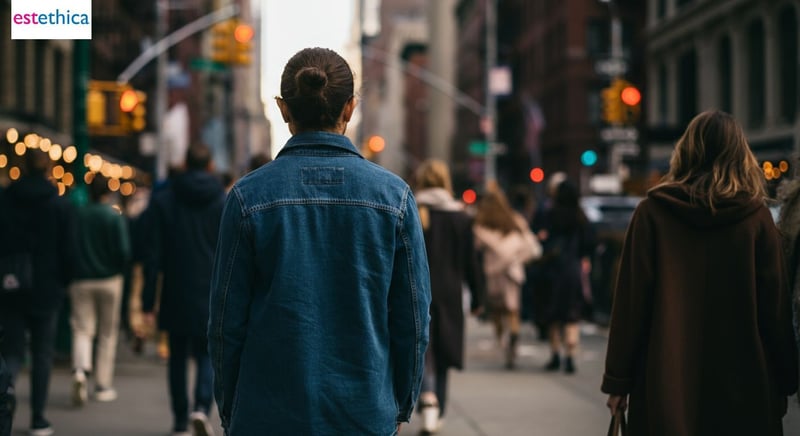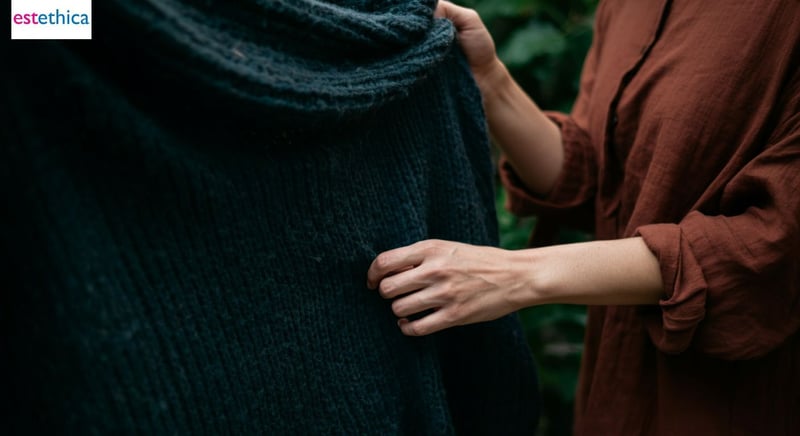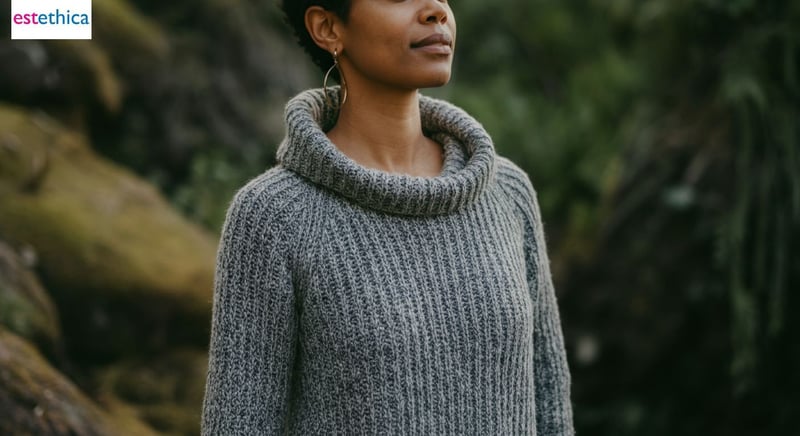estethica: The Future of Eco-Friendly Fashion
Master sustainable fashion with eco-friendly choices and trusted ethical brands.
estethica Unveiled: Mastering Sustainable Fashion
As the push towards sustainability becomes more pressing, ‘sustainable fashion’ emerges as a revolutionary approach, aiming to significantly reduce the ecological footprint of our clothing choices. The journey of mastering sustainable fashion involves understanding its core principles, adopting eco-friendly practices, and exploring ethical fashion brands that prioritize environmental stewardship. In this comprehensive guide, we will delve into the multifaceted aspects of sustainable fashion, offering insights and practical steps for an eco-conscious wardrobe transformation.
Understanding the Core of Sustainable Fashion
The Lifecycle of Eco-Friendly Clothing
Sustainable fashion is more than just a trend; it represents a commitment to the environment and society. The lifecycle of eco-friendly clothing begins with responsible material sourcing, such as organic cotton or recycled polyester. These materials are chosen for their minimal environmental impact and durability. For instance, organic cotton uses less water and avoids harmful pesticides, making it a preferred choice for sustainable textiles.
Key Elements of Sustainable Fashion
- Material Sourcing: Using organic or recycled materials to reduce environmental impact.
- Production Processes: Implementing energy-efficient and waste-reducing techniques.
- Product Lifecycle Management: Ensuring products are designed for longevity and recyclability.
These elements contribute to the aesthetic look of sustainable fashion, where style meets responsibility. By focusing on these aspects, brands can move towards a circular fashion economy, reducing waste and promoting a more sustainable future.
Steps to Embrace Slow Fashion
- Choose Quality Over Quantity: Invest in pieces that are timeless and durable.
- Support Ethical Fashion Brands: Look for brands that prioritize fair labor practices.
- Recycle and Upcycle: Extend the life of your clothing through creative reuse.
By adopting these practices, consumers can contribute to a more sustainable fashion industry. The shift from fast fashion to slow fashion emphasizes quality and ethical production, aligning with the principles of sustainable fashion. For more insights on aesthetics in fashion, explore aesthetic insights from estethica.

Choosing Eco-Friendly Clothing: A Step-by-Step Guide
Understanding Eco-Friendly Materials
Eco-friendly clothing begins with selecting materials that have a minimal environmental impact. Organic cotton, for example, uses 91% less water than conventional cotton. Hemp is another sustainable choice, known for its durability and low pesticide requirement. Bamboo, often used in sustainable textiles, grows rapidly and requires no fertilizers, making it an eco-conscious clothing option.
Evaluating Ethical Fashion Brands
- Research Brand Ethics: Investigate a brand's commitment to fair labor practices and environmental responsibility.
- Check Certifications: Look for certifications like Fair Trade or GOTS (Global Organic Textile Standard) to ensure ethical production.
- Assess Transparency: Choose brands that openly share their production processes and sourcing details.
These steps help consumers align their purchases with their values, supporting ethical fashion brands that prioritize sustainability and transparency. This approach not only enhances the aesthetic look of your wardrobe but also contributes to a circular fashion economy.
Steps to Build an Eco-Friendly Wardrobe
- Start with Basics: Invest in versatile pieces made from sustainable materials like organic cotton or hemp.
- Embrace Timeless Styles: Choose designs that transcend seasonal trends, ensuring longevity and reducing waste.
- Prioritize Quality: Opt for well-made garments that withstand wear and tear, promoting a zero-waste fashion approach.
By following these steps, you can create an ethical wardrobe makeover that reflects your commitment to sustainable fashion. This deliberate choice not only supports the environment but also enhances your personal style with an elite-aesthetics appeal.

Spotlight on Ethical Fashion Brands You Can Trust
Exploring the Aesthetic Appeal of Ethical Fashion
Ethical fashion brands are redefining the aesthetic look of sustainable fashion by integrating style with responsibility. These brands, like Patagonia and Everlane, prioritize transparency and sustainability, offering consumers a unique blend of aesthetics and ethics. The secret aesthetics of these brands lie in their commitment to eco-friendly practices and their ability to create visually appealing designs that resonate with eco-conscious consumers.
Identifying Trustworthy Ethical Fashion Brands
- Transparency: Brands like Everlane provide detailed cost breakdowns, enhancing trust.
- Certifications: Look for GOTS and BCI certifications for credibility.
- Commitment to Sustainability: Patagonia integrates sustainability into its core business model.
These elements contribute to the elite-aesthetics of ethical fashion, where consumers can enjoy stylish clothing while supporting responsible practices. By choosing brands that prioritize these values, shoppers can participate in a circular fashion economy, promoting sustainable textiles and reducing environmental impact.
Steps to Discover Ethical Fashion Brands
- Research Brand Values: Investigate the brand's mission and sustainability initiatives.
- Check for Certifications: Ensure the brand holds relevant eco-friendly certifications.
- Evaluate Transparency: Look for brands that openly share their production processes.
By following these steps, consumers can find ethical fashion brands that align with their values, enhancing their wardrobe with eco-conscious clothing. This approach not only supports sustainable fashion but also elevates personal style with a focus on aesthetics and responsibility.

Exploring the Benefits of Green and Slow Fashion
The Timeless Aesthetic of Sustainable Fashion
Green and slow fashion offer a timeless aesthetic that transcends fleeting trends. By focusing on quality and craftsmanship, these movements create garments that not only last longer but also maintain their appeal over time. For example, a well-crafted wool coat can be a staple in your wardrobe for years, offering both functionality and style. This approach aligns with the elite-aesthetics of fashion, where the emphasis is on enduring beauty and sustainability.
Key Advantages of Green and Slow Fashion
- Reduced Environmental Impact: By choosing sustainable textiles, you minimize waste and pollution.
- Support for Ethical Labor: Slow fashion prioritizes fair wages and safe working conditions.
- Enhanced Personal Style: Investing in timeless pieces allows for a unique and personal aesthetic look.
These benefits highlight the secret aesthetics of green fashion, where the focus is on creating a meaningful connection with clothing. By embracing this approach, individuals contribute to a more sustainable future while enjoying the artistic expression that fashion offers.
Steps to Embrace Green and Slow Fashion
- Invest in Quality: Choose garments made from durable, eco-friendly materials.
- Prioritize Ethical Brands: Support companies that are transparent about their labor practices.
- Adopt a Minimalist Wardrobe: Focus on fewer, high-quality items that reflect your personal style.
By following these steps, you can create a wardrobe that not only meets your functional needs but also aligns with your values. This conscious choice supports the circular fashion economy, promoting sustainability and responsibility in the fashion industry.
Innovative Techniques in Sustainable Fashion
Excellence in Green and Slow Fashion
Frequently Asked Questions
What are the core principles of sustainable fashion?
How can I choose eco-friendly clothing?
What are the benefits of slow fashion compared to fast fashion?
How do ethical fashion brands ensure transparency and trust?
What steps can I take to build a sustainable wardrobe?
Discover the Art of Healthy Beauty with estethica! Call us now for a free consultation and take the first step towards a more confident you.
📞 Call for Your Free Consultation Today!